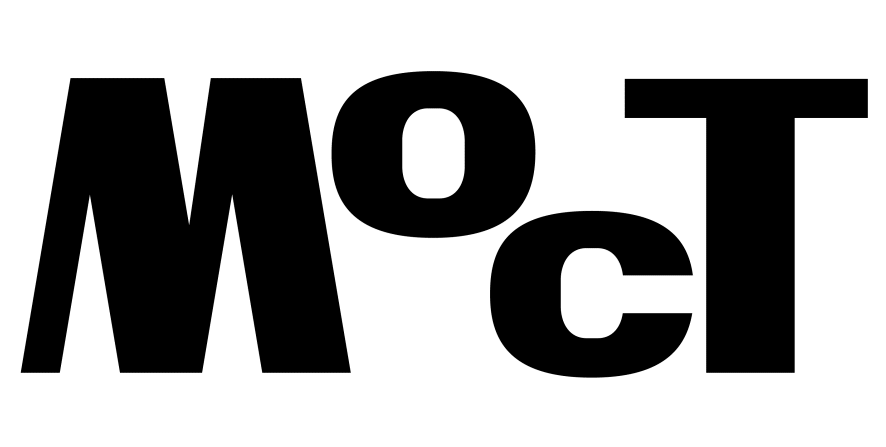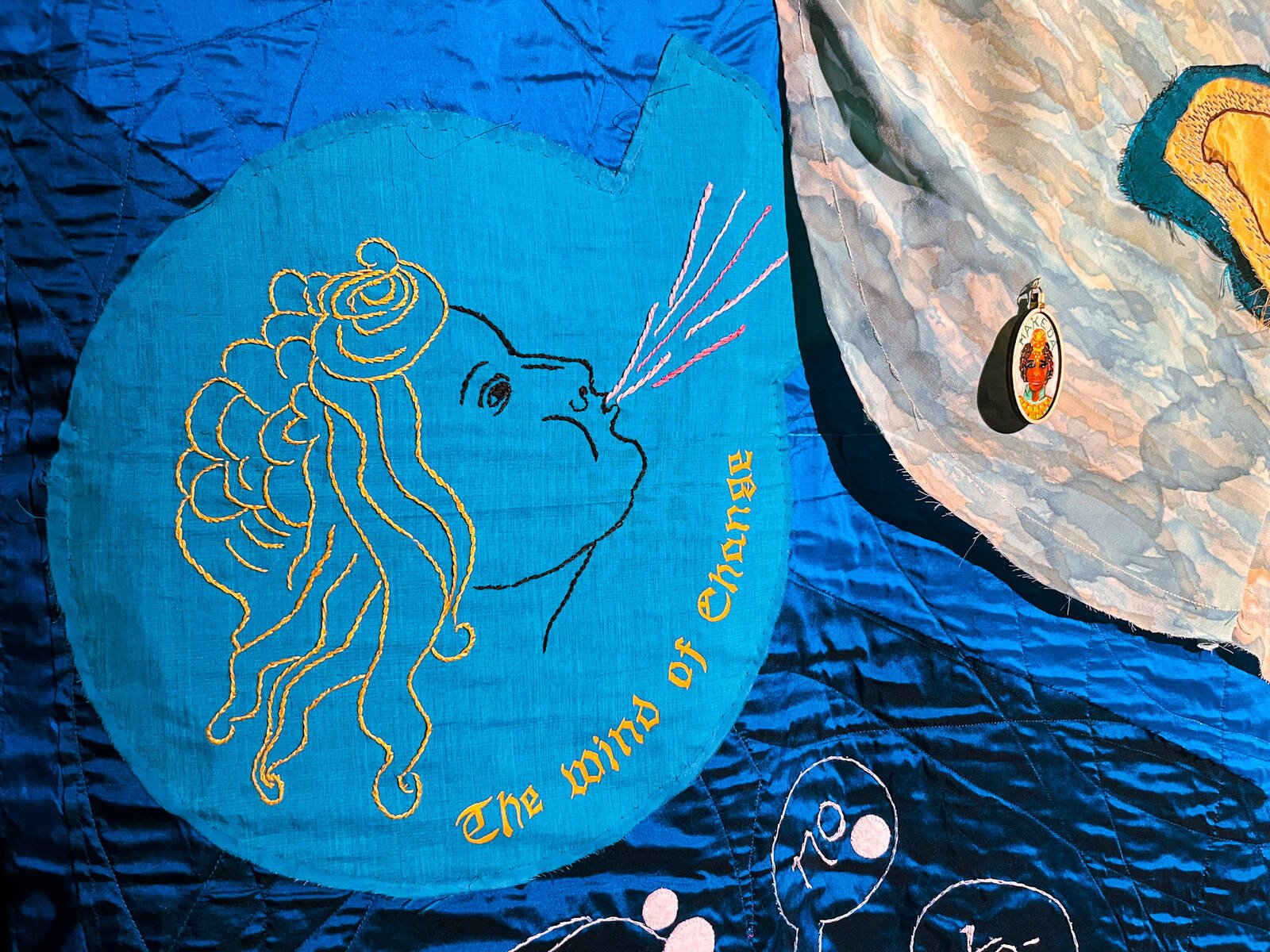Teodora Talhos
The first time I heard about the OFF Biennale was sometime in 2015 or 2016, when its success as the biggest independent art event in Hungary — and probably one of the only events of its kind in Central and Eastern Europe — was being talked about in the inner circles of the independent art scene in Vienna, where I was based at the time. It started out as a grassroots initiative aiming to regenerate the local art scene. Since then, it has become an internationally renowned, regular event. The OFF Biennale is based on collaboration between curators, artists, researchers, and local civil groups, always tackling issues that are deemed irrelevant by mainstream politicians. In its ten years of existence, it has never changed its core value of not applying for state funding in order to preserve its freedom of speech — a delicate topic in Hungary nowadays. With a new, Russian-style law in preparation, aiming to blacklist organisations receiving foreign funding, Hungary’s ruling party, Fidesz, is accelerating their dismantling of civil society. The “Sovereignty Protection Act” will empower a newly created state authority to surveil, penalize, and publicly list NGOs and cultural organisations that receive international support, accusing them of undermining national sovereignty. Such groups could lose access to public donations, face steep fines, and be forced to submit financial disclosures — measures that critics say mirror Russia’s 2012 “foreign agent” law, which brutally stifled dissent and left few opposition voices when the full-scale invasion of Ukraine began in 2022. Is this the path Viktor Orbán envisions for Hungary?
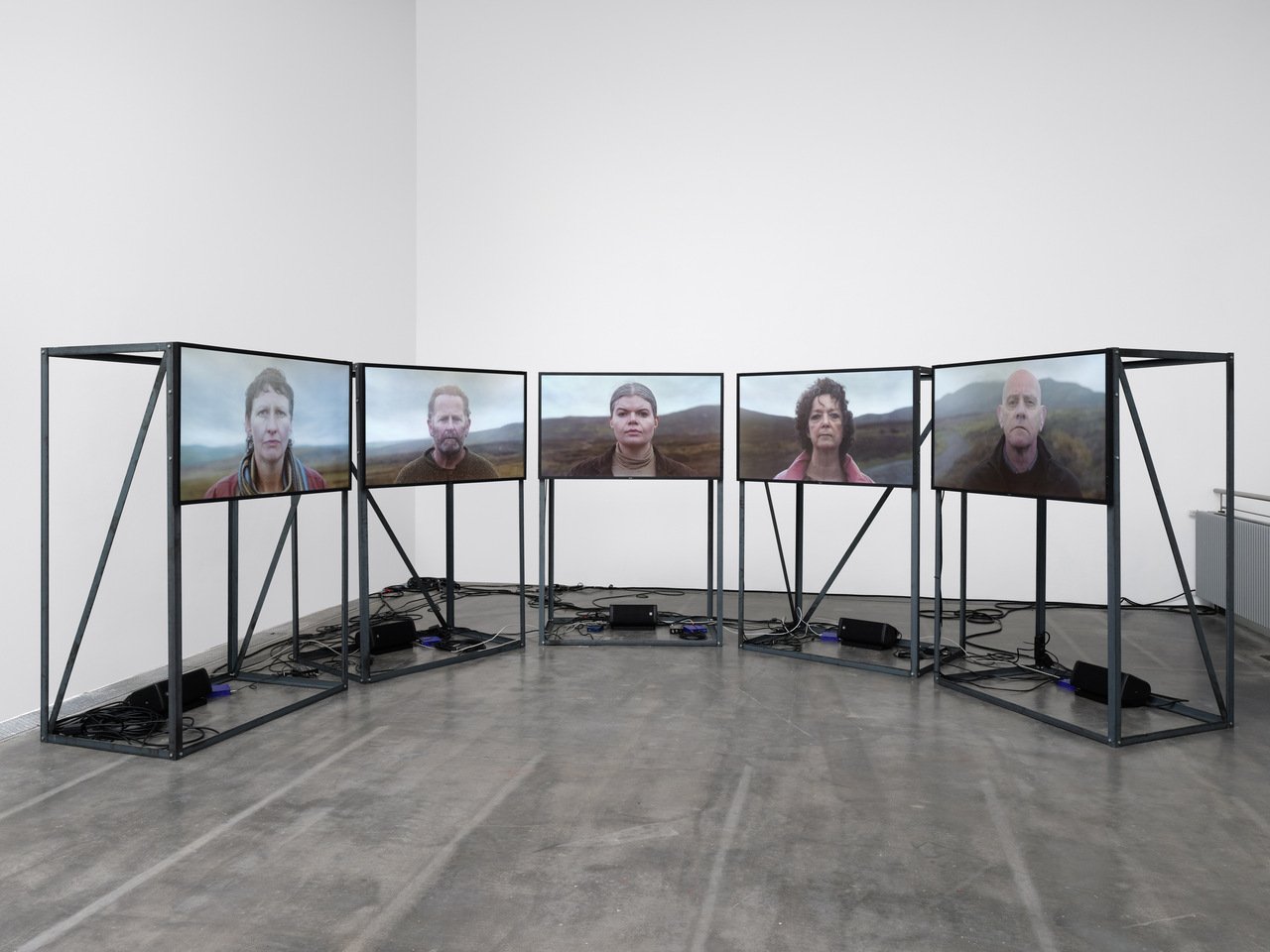
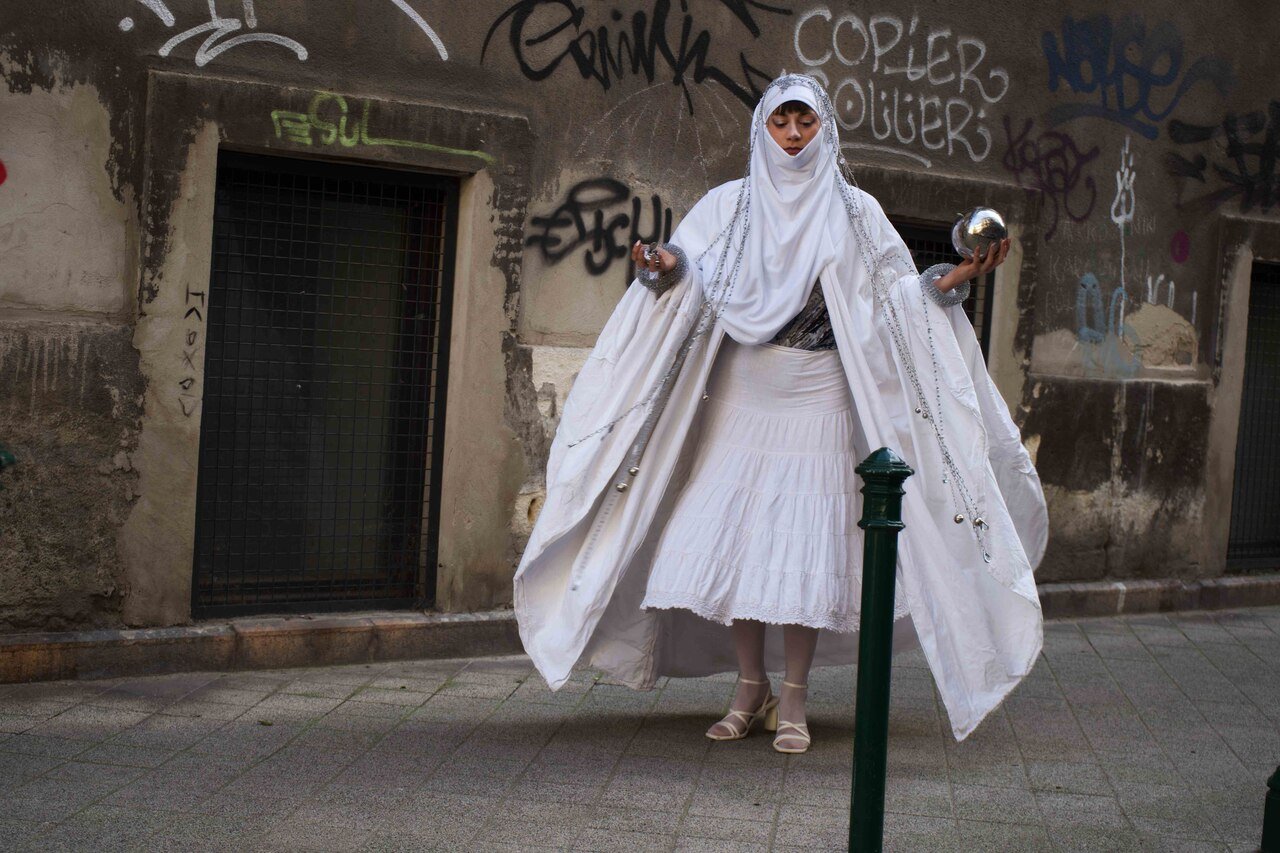
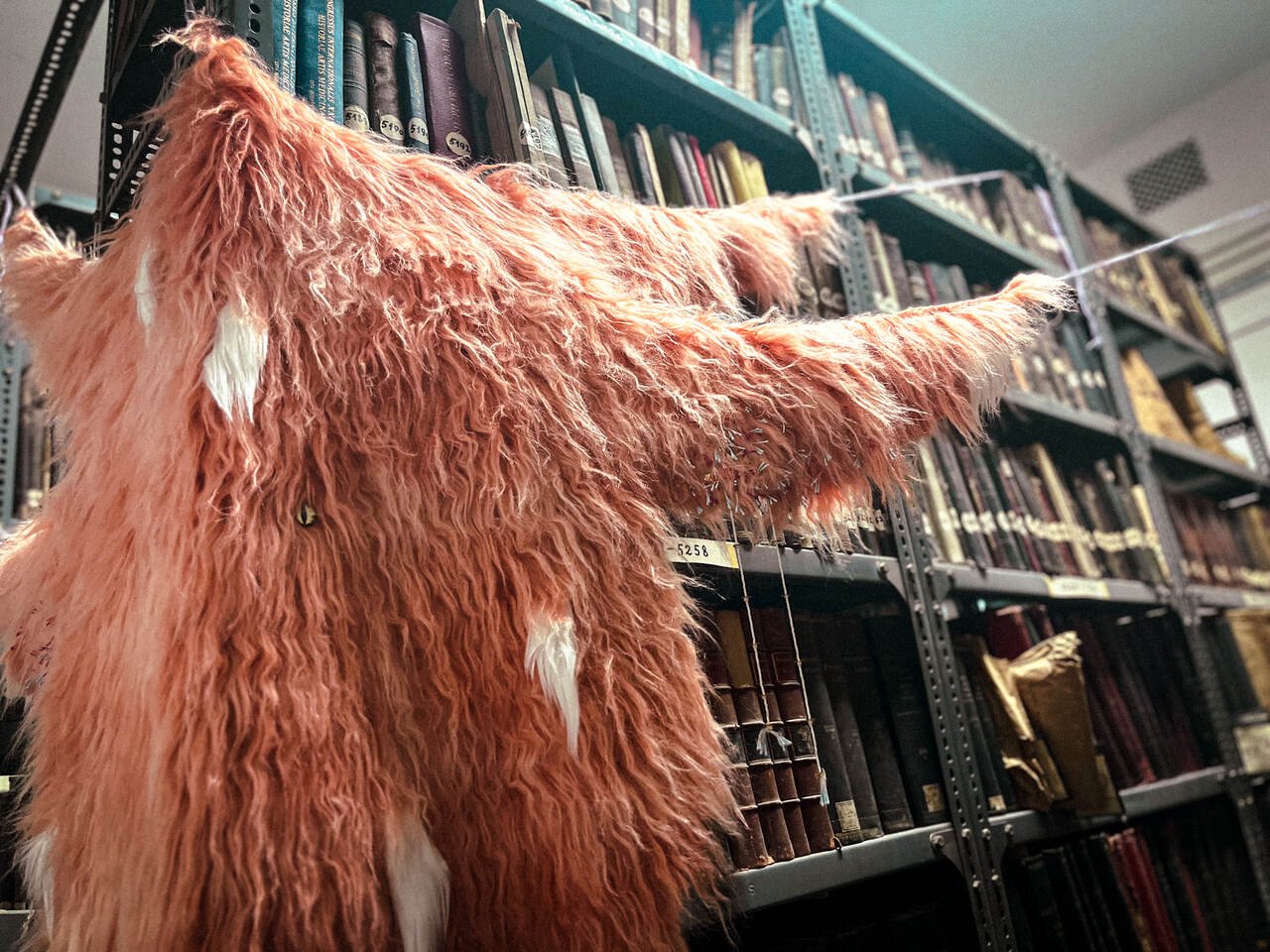

Against this backdrop, the OFF-Biennale refuses to remain silent. In this context, and marking its 10th anniversary, the biennale will close its six-week long festival with a marathon art walk and act of solidarity on the 14th of June. Bringing together artists, curators, and cultural partners, this public gathering will highlight urgent themes such as social invisibility and safety, while also taking a clear stand for antifascist, humanist, pacifist, and inclusive values. This gesture reaffirms the role of art as a peaceful form of civic presence and a shared commitment to social responsibility. In a time when independent voices are under threat, the OFF-Biennale continues to insist on art as a tool of resistance — amplifying the concerns of marginalized communities and defending freedom of expression in Hungary and beyond.
Taking place every two years in Budapest, the OFF Biennale has been active without interruption since 2015, moving only once in 2021 to Kassel during Documenta 15, where they presented several projects, including RomaMoMa, a collaborative project with the European Roma Institute for Arts and Culture (ERIAC) showcasing untold and unfolding Roma narratives.
In the current political climate, the future of the Biennale is uncertain. Regardless, it remains committed to standing its ground for as long as possible — through art, poetry, and inclusive engagement with the most overlooked members of society.
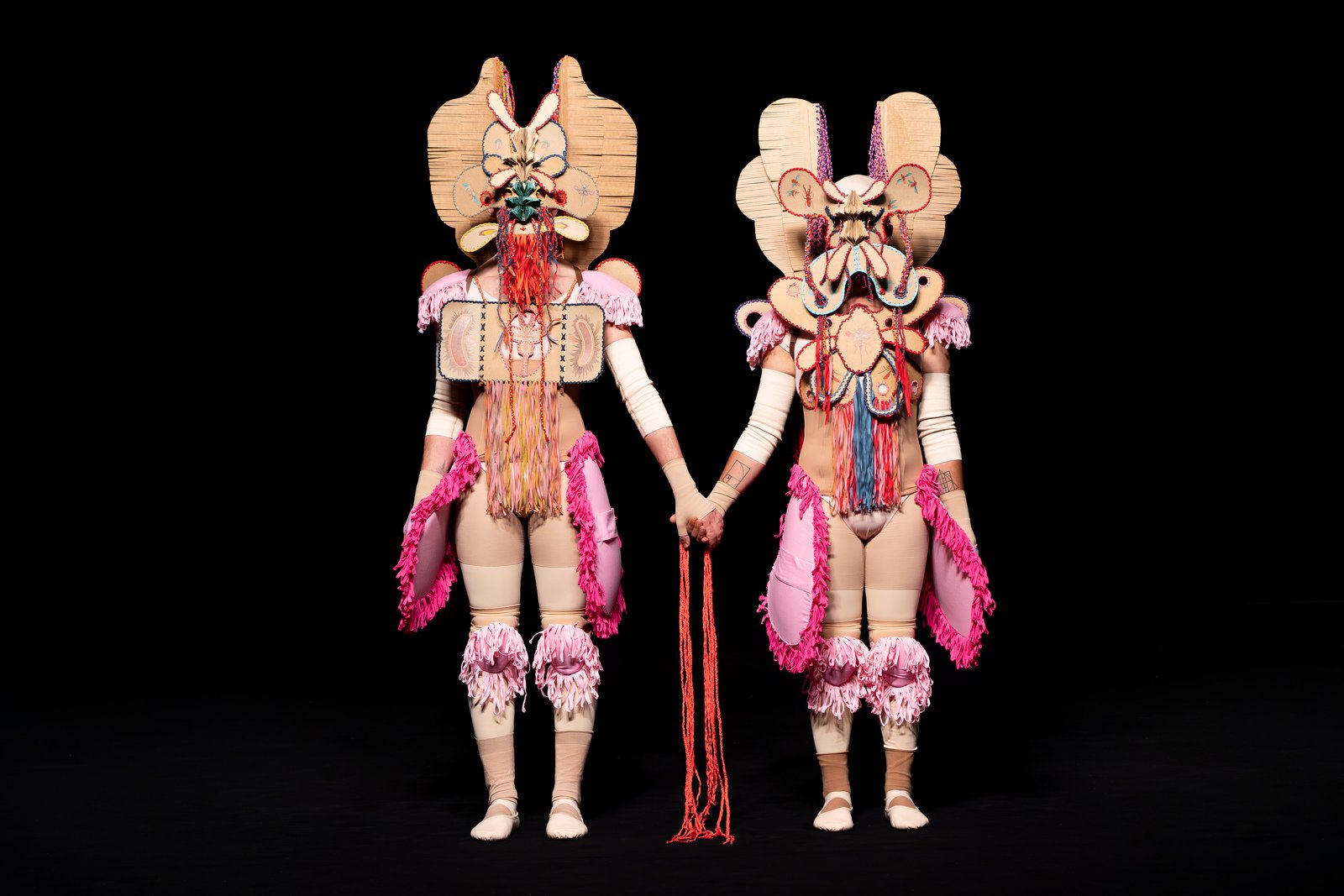
This year’s edition is titled Poems of Unrest, referencing an artwork by the artist and activist Robert Gabris. The main topic is security, and how this basic term takes on new and unpleasant meanings in the current situation of ongoing, large-scale wars and growing far-right extremism. Taking place in various locations, including a WWII bunker, a recently refurbished theatre, and public squares, the OFF Biennale addresses our current global unrest and tensions, and how they affect us individually. Even in the face of such massive adversity we are not all equal, and we experience different levels of privilege. We are still shaped by colonial, capitalist, and imperialist views. The team of the curatorial board – Nikolett Erőss, Rita Kálmán, Eszter Lázár, Edit Molnár, Veronika Molnár, Lívia Páldi, Hajnalka Somogyi, Borbála Soós, Kata Oltai, and Katalin Székely – have gathered a variety of artistic voices addressing issues such as gender violence, queer ecologies, migration, decolonial attempts, feminist resistance, and systemic inequality. Organising a critical exhibition with no state funding might seem a courageous gesture nowadays, but in the near future, it will be important for all cultural workers to learn from this practice. The scarcity of resources is evident in the exhibition format: most of the displayed pieces are video works, leaving viewers wishing for something more tangible to interact with. However, they were able to strike a balance between immaterial art and impressive installations at the main biennale location, the Merlin Theatre.
As you go upstairs to the first floor, you are greeted by a mysterious black curtain. You are informed that beneath this large piece of fabric, you can find a collaborative work by Alice Maher and Rachel Fallon. The two Irish artists combine activism with art, campaigning for women’s reproductive rights, which were under fire in Ireland until recently. Abortion was only made legal there in 2018, after years of debate and the unnecessary death of Savita Halappanavar, who was denied an abortion after suffering a miscarriage and subsequently died from sepsis. You would expect to find a film or video installation inside the darkened space. Instead, however, you encounter a monumental textile work that is meant to be viewed from both the front and the back.
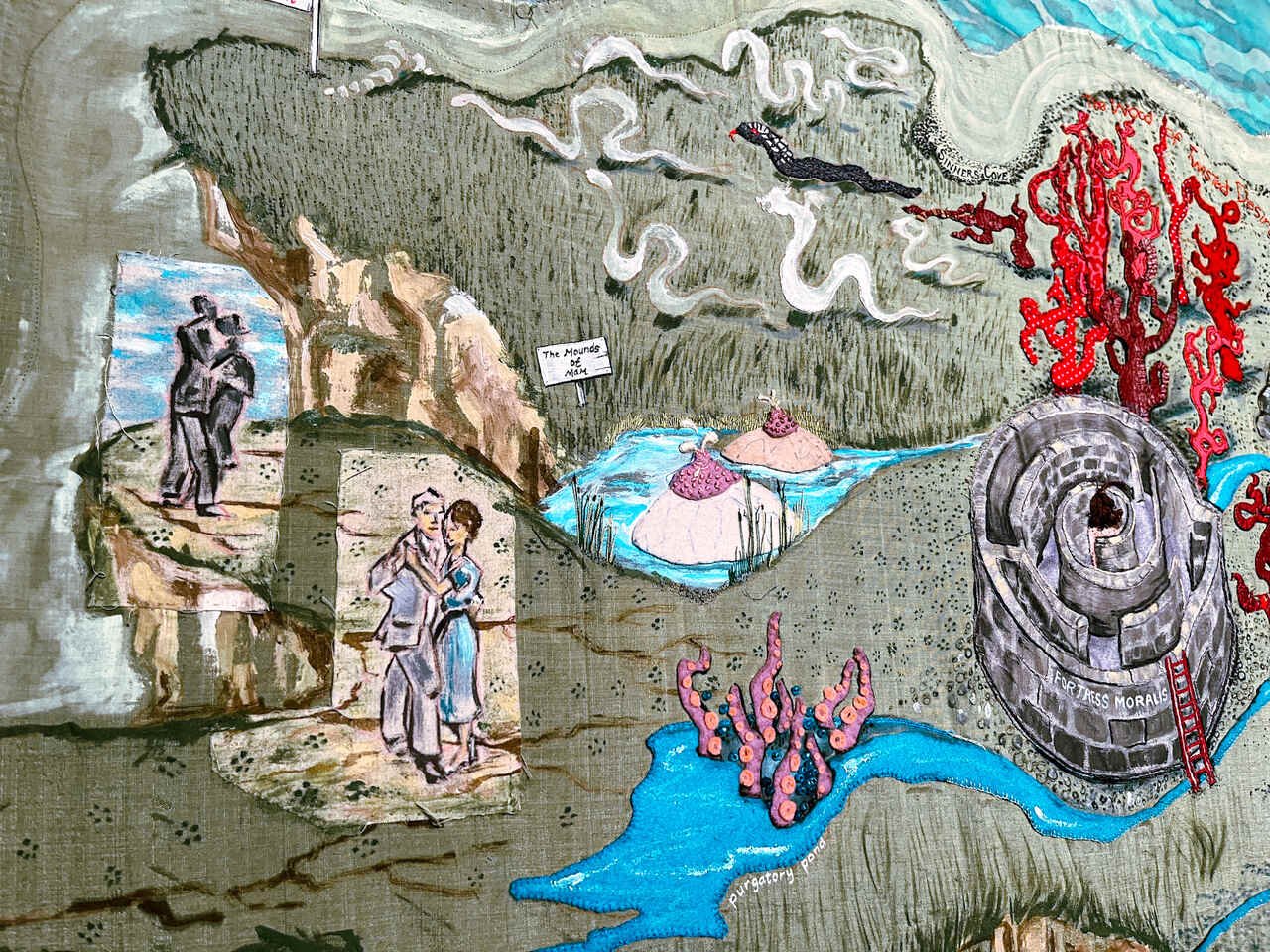
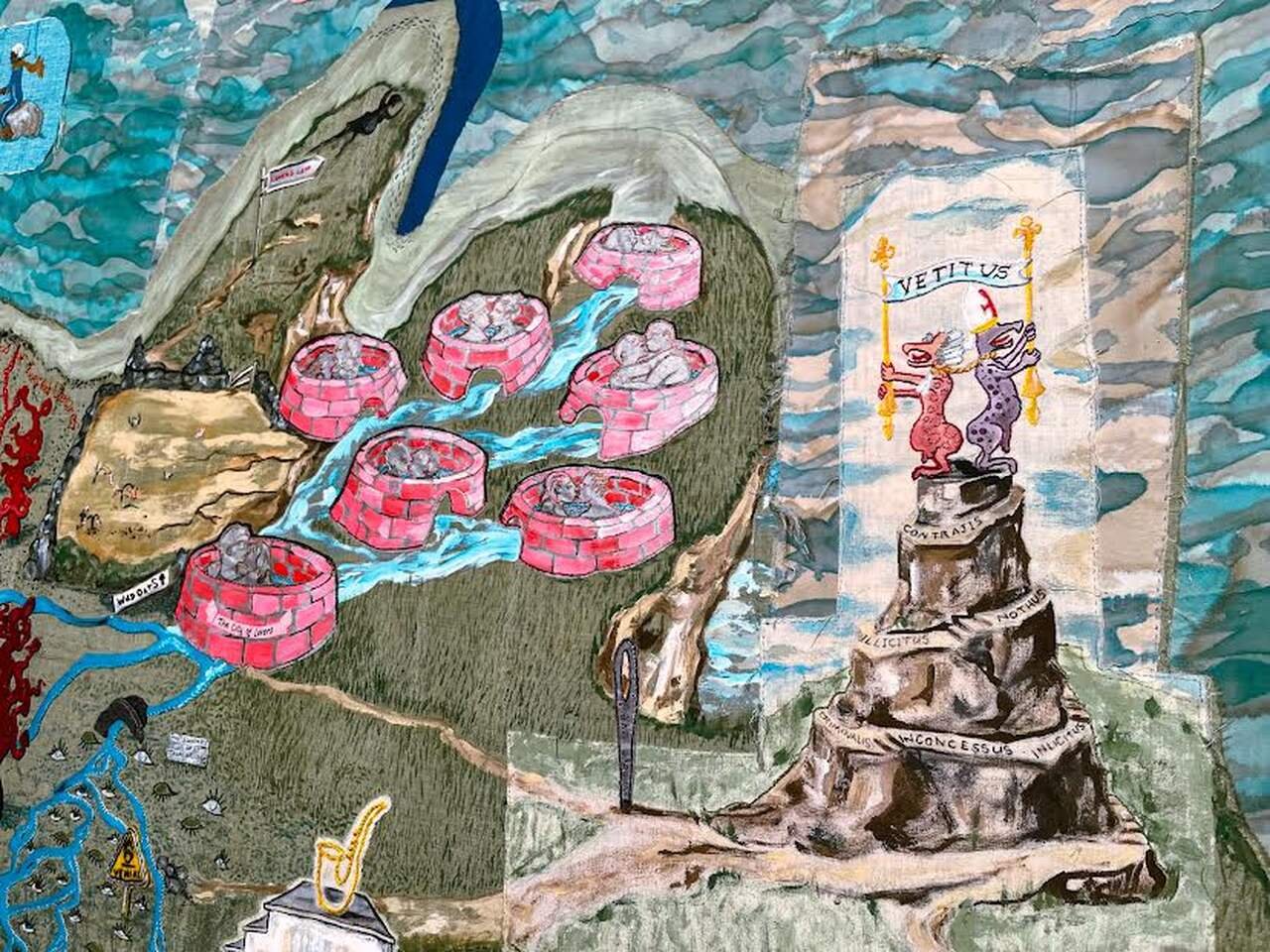
The impressive work, The Map, took three years to create and is based on the disputed legacy of Mary Magdalene. She is seen as both a saint and a fallen woman who found her way back to the “right” path through penitence. In Ireland, Mary Magdalene is associated with the Magdalene Laundries, a system of institutions used to imprison and punish women who had children outside of marriage, or who simply did not adhere to social norms and were deemed problematic by the Catholic Church. This included sex workers and women and young girls who had been abused or who mental health issues. With the complicity of the state, these women were locked away and used for free labour with no rights whatsoever. The work also alludes to the humiliation that women experienced because of their “free spirits” or the traumatic situations that many of them were forced into. Needless to say, there is no mention of the men who impregnated, raped, or abused these women and faced no consequences. Many of these women and girls died during their incarceration, and mass graves containing the bodies of women and children continue to be discovered to this day. For example, a mass grave containing over 150 unidentified bodies was discovered on the grounds of one such institution in the 1990s. Around ten years ago, a mass grave containing the remains of approximately 800 children was discovered on the grounds of a similar institution run by the Catholic Church. The last Magdalene Laundry did not close until 1996. Unsurprisingly, both the State and the Catholic Church initially denied the accusations, with Pope Francis only issuing a public apology for the atrocities committed in Ireland on behalf of the entire Church in 2018.
The concept of these homes, which were advertised as “safe spaces” for unmarried women but in reality, stripped them of their freedom and forced them to give up their children for adoption, connects with the main topic of the Biennale, security, and how it can be twisted. This is actually one of the main questions connecting all the artworks and exhibitions within the Biennale: who is being protected from whom, and how do the protection mechanisms work? In this case, it was the conformist majority who were being “protected” from some of the most vulnerable people in the community.
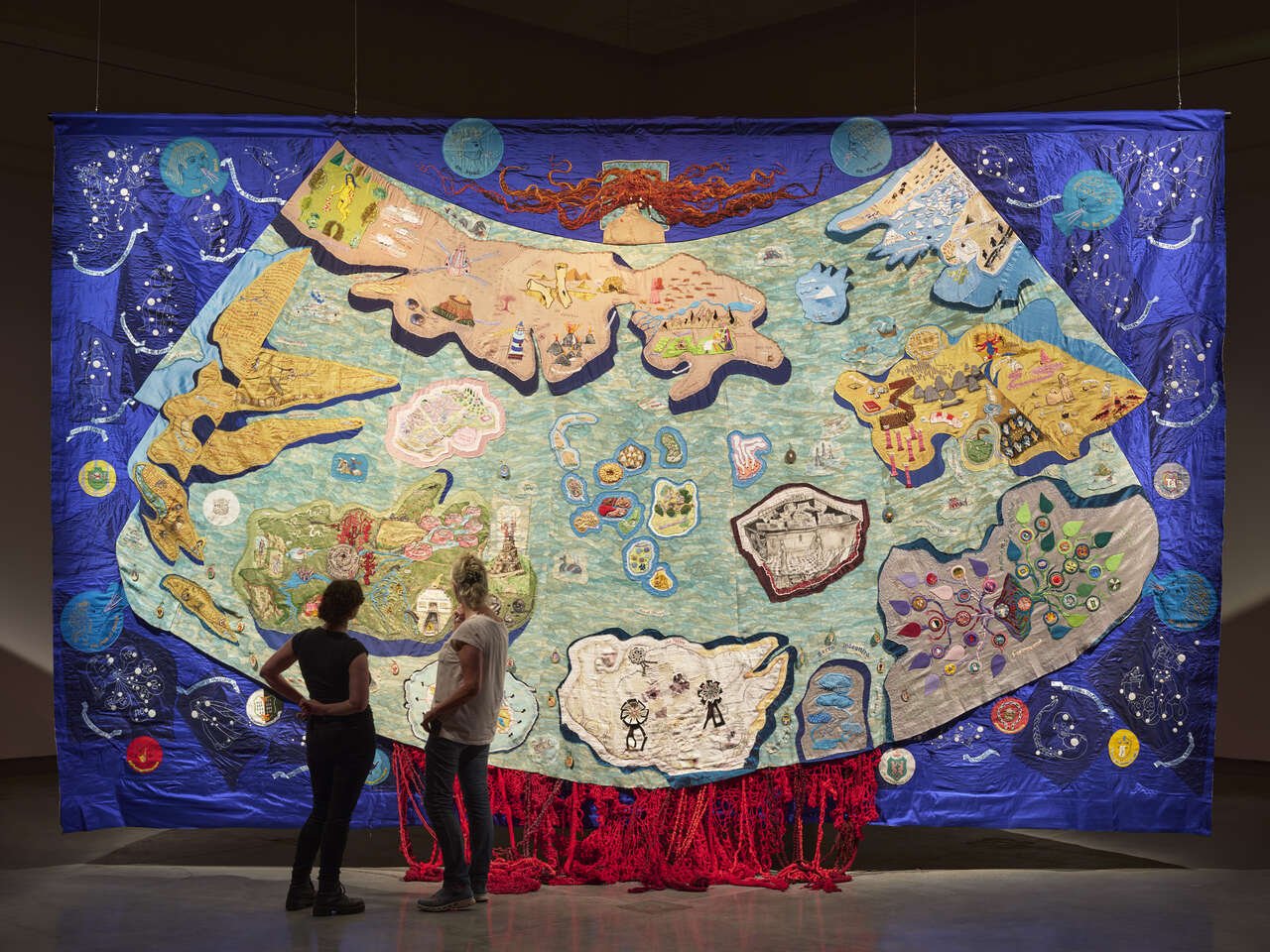
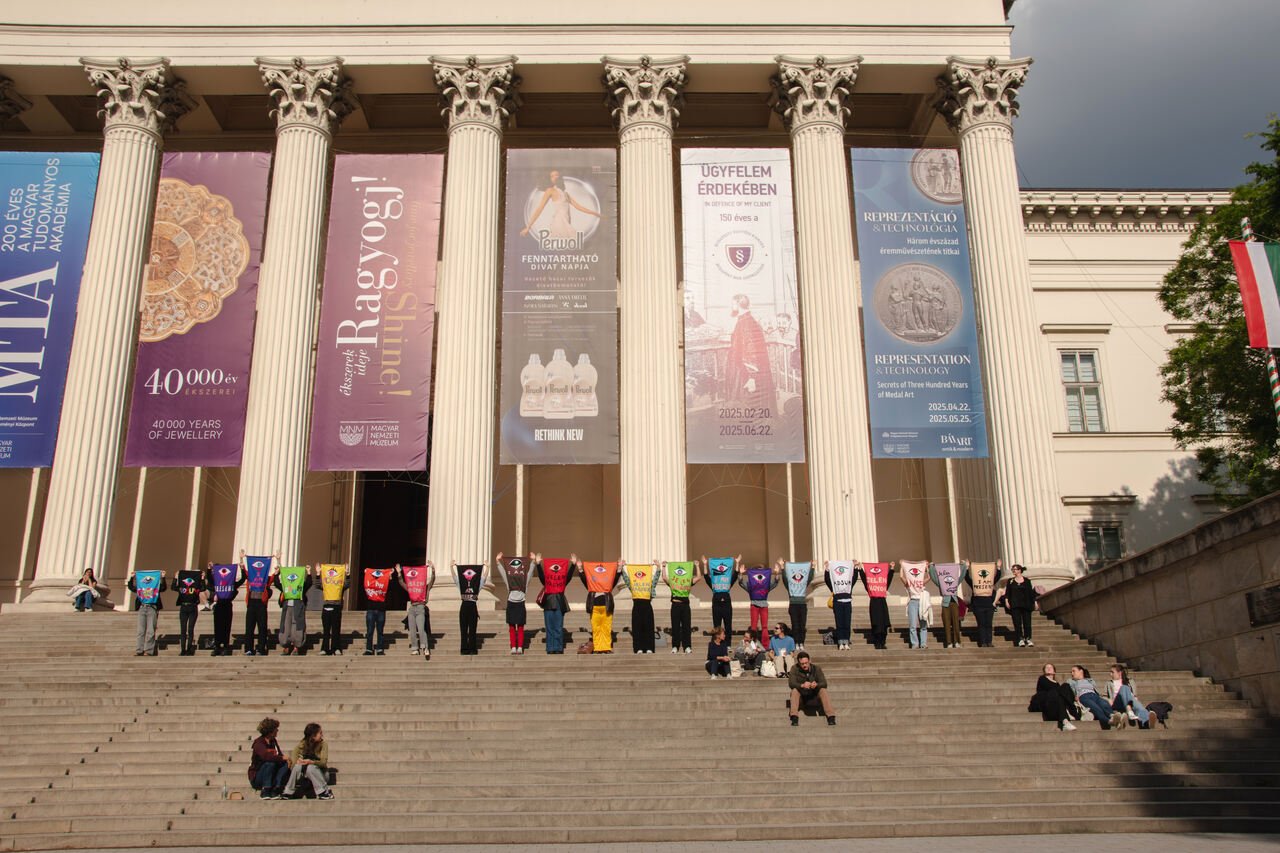
Maher and Fallon have given their work a poetic and playful twist. The map they created has no cardinal points and there is no “right” way to look at it. They depict places of desire and pleasure, such as the “Ballroom of Romance” and the “City of Lovers,” where couples can be seen kissing passionately in pink hot tubs. There is also a peninsula of tears and bitter water adorned with medallions of famous women, from Miriam Makeba to Madonna and Rosa Parks. The whole image cannot be grasped from one view – you need to go around it, peek closer and step back. This is similar to the difficulty of reconstructing the lives of women in the Magdalene Laundries, which were concealed for so long and still continue to be so to this day. According to the artists, there is no correct interpretation of the work. Each viewer can interpret it as they wish, whether or not they are familiar with the story behind it. The carefully constructed miniature scenes are intended to encourage dialogue and inspire other women to share their stories.
Another hard-to-swallow story that many of us can relate to is the one described by Bede Kincső in her solo show at the Milestone Institute. A young Romanian-Hungarian artist, Kincső had a childhood similar to many Eastern Europeans: she grew up in a small city with a difficult male relative. In her case, it was her grandfather, who regularly drank and became violent towards her grandmother. Mainstream narratives often depict grandparents’ houses as welcoming spaces. But reality can show us something different. In this intimate setting, Kincső attempts to set the record straight about this problematic figure, who was nonetheless very important in her becoming an artist. The installation, titled The Art of Pista (Pista was the name of her grandfather), combines her photography with pieces by her grandparents – wool socks and small sculptures – that pose important questions about gender dynamics and the role of photography in terms of the artistic canon.
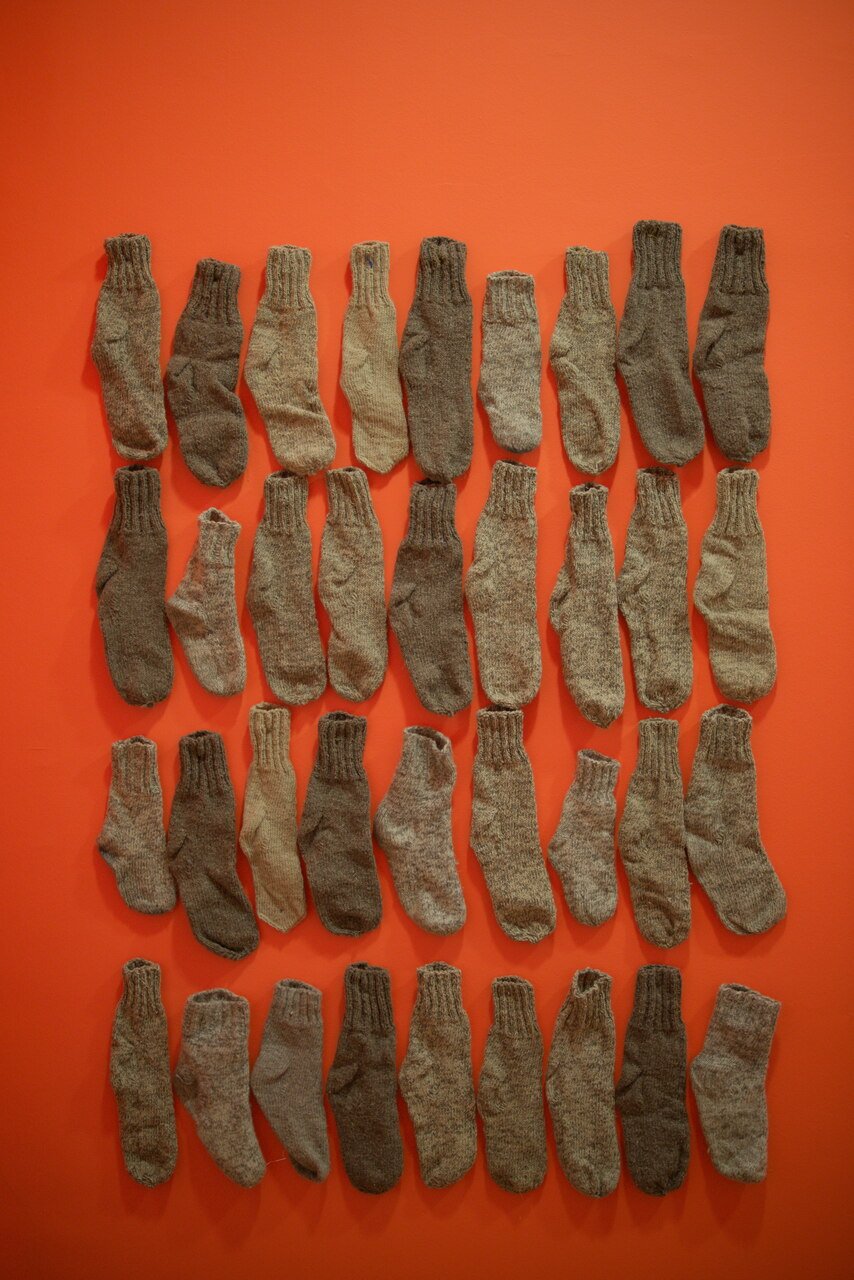
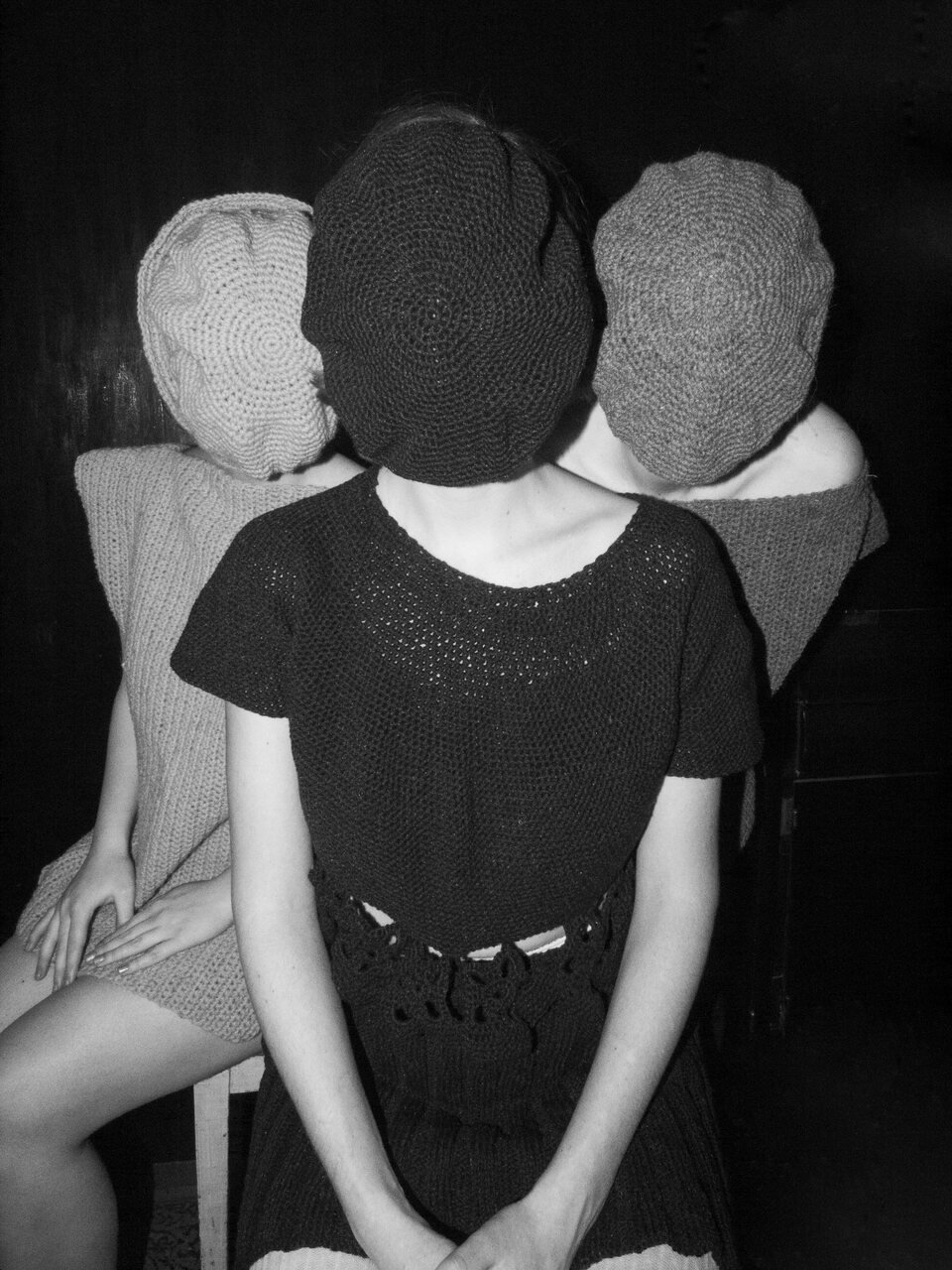
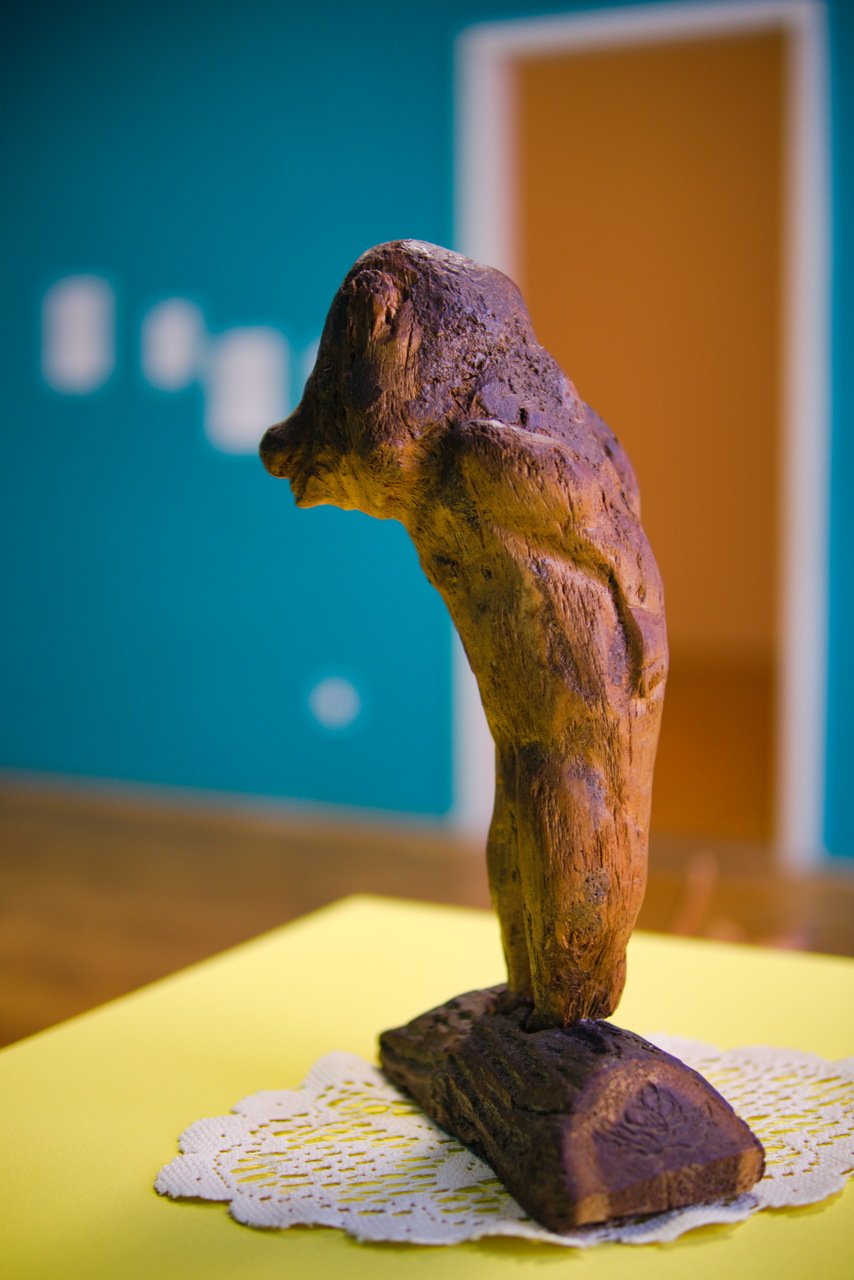
In the first room there is a collection of wool socks knitted by Kincső’s grandmother on the right wall. She knitted them as a coping mechanism. How many of us had a grandmother who would lovingly knit us jumpers and vests, but who would also start knitting aggressively whenever the atmosphere at home became unbearable due to an angry, shouting husband? On the left, there is a small photograph of Pista as a child. Here, we learn that he was orphaned and had a difficult childhood. According to Bede, this image helped her to come to terms with her past and forgive him, as she came to understand that trauma is born out of trauma. In the main room, there is a blurry, larger-than-life portrait of Pista. It was taken with his consent during one of his drunken rages when he was hurting those around him. The artist recalls this as the moment she discovered the power of photography and its potential as a medium: by positioning herself as an observer who could immortalise an extremely charged moment, she could capture it and ultimately move on. Pista’s own abstract and anthropomorphic wooden sculptures are scattered around the room alongside some miniature armchairs that he made for his granddaughter to play with. One cannot help but think about his motives and how, despite being a terrible person in his personal life, he felt the need to express himself artistically, showing sensitivity toward the world around him.
The most powerful segment of this installation was in a very narrow, triangular-shaped room. In there you can see a beautifully carved chair made by Pista, who died a couple of years ago. Alongside it is a photograph of the chair, taken by Kincső and framed by Pista. The chair and the photograph are positioned in uncomfortable frontal proximity to each other. Titled Dialogue with my grandfather, this piece concludes an experience that felt overwhelming and seemingly never-ending, yet ultimately demonstrating that it is possible to engage in dialogue with a hurtful past, to both better understand and to forgive.
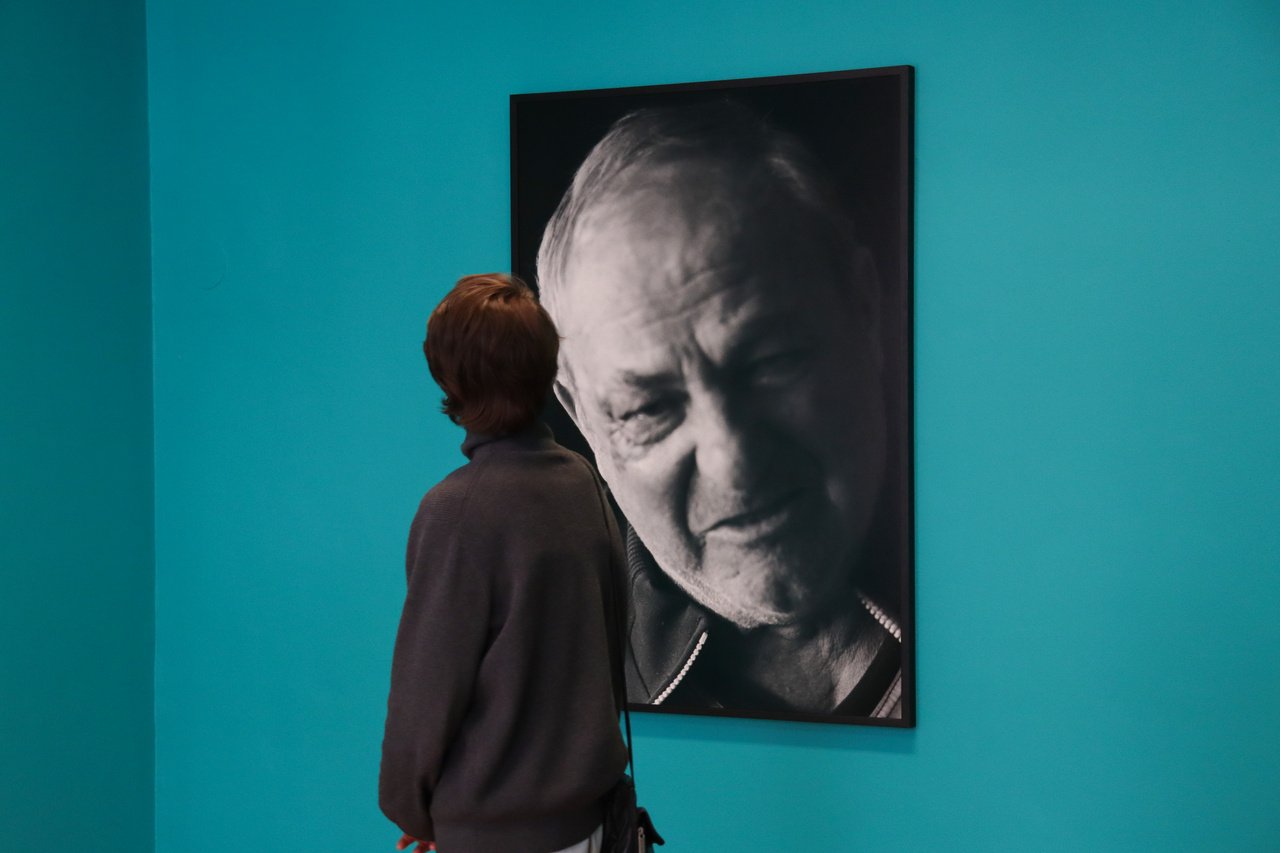
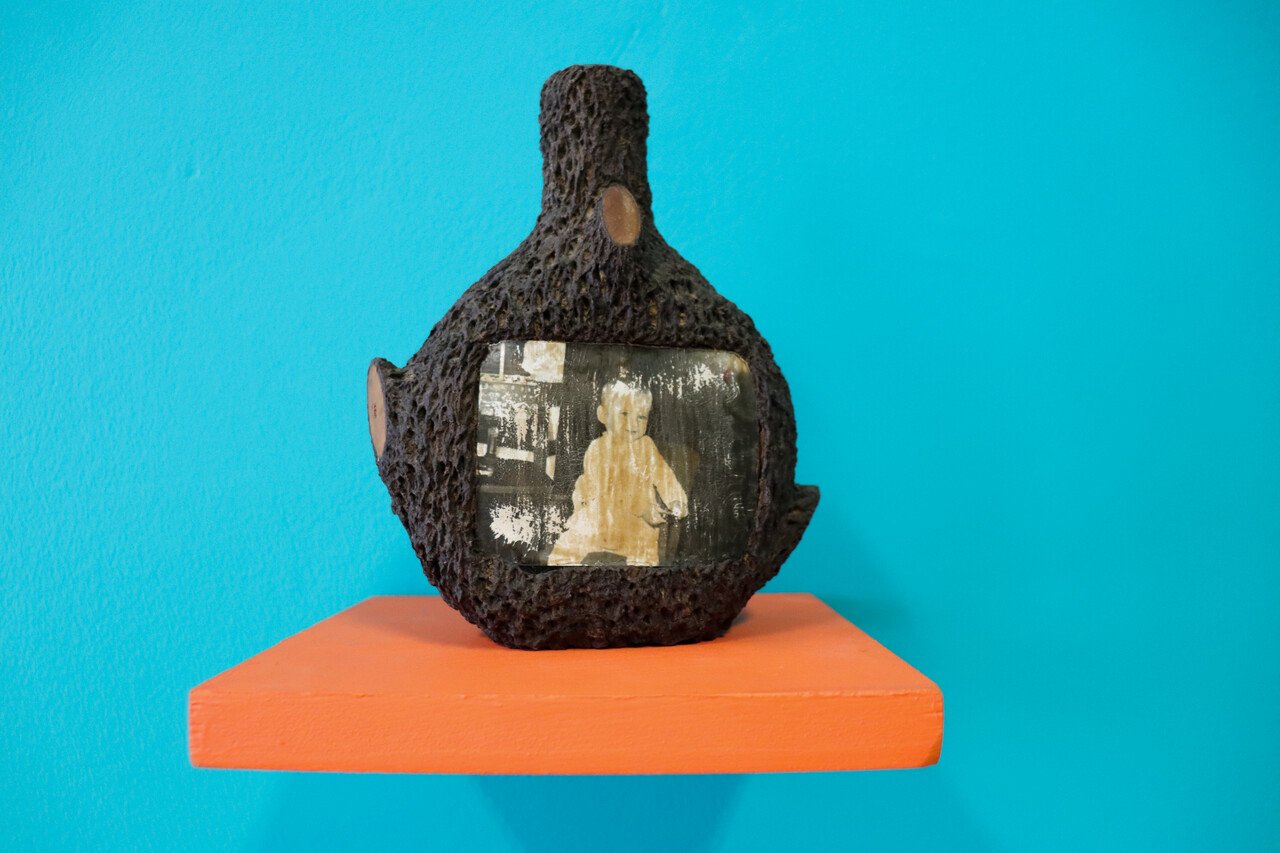
The Biennale contains a myriad of powerful messages that many visitors will be able to relate to or reflect on, including several installations that depict the effects of trauma on children and how it shapes their lives as adults. As well, viewers may also be able to observe a general sense that the Biennale is moving in a completely different direction than that which is currently being promoted by mainstream politics, focusing rather on empathy and radical vulnerability, forgiveness, and resistance, and above all, on telling the stories that are not heard in general public discourse.
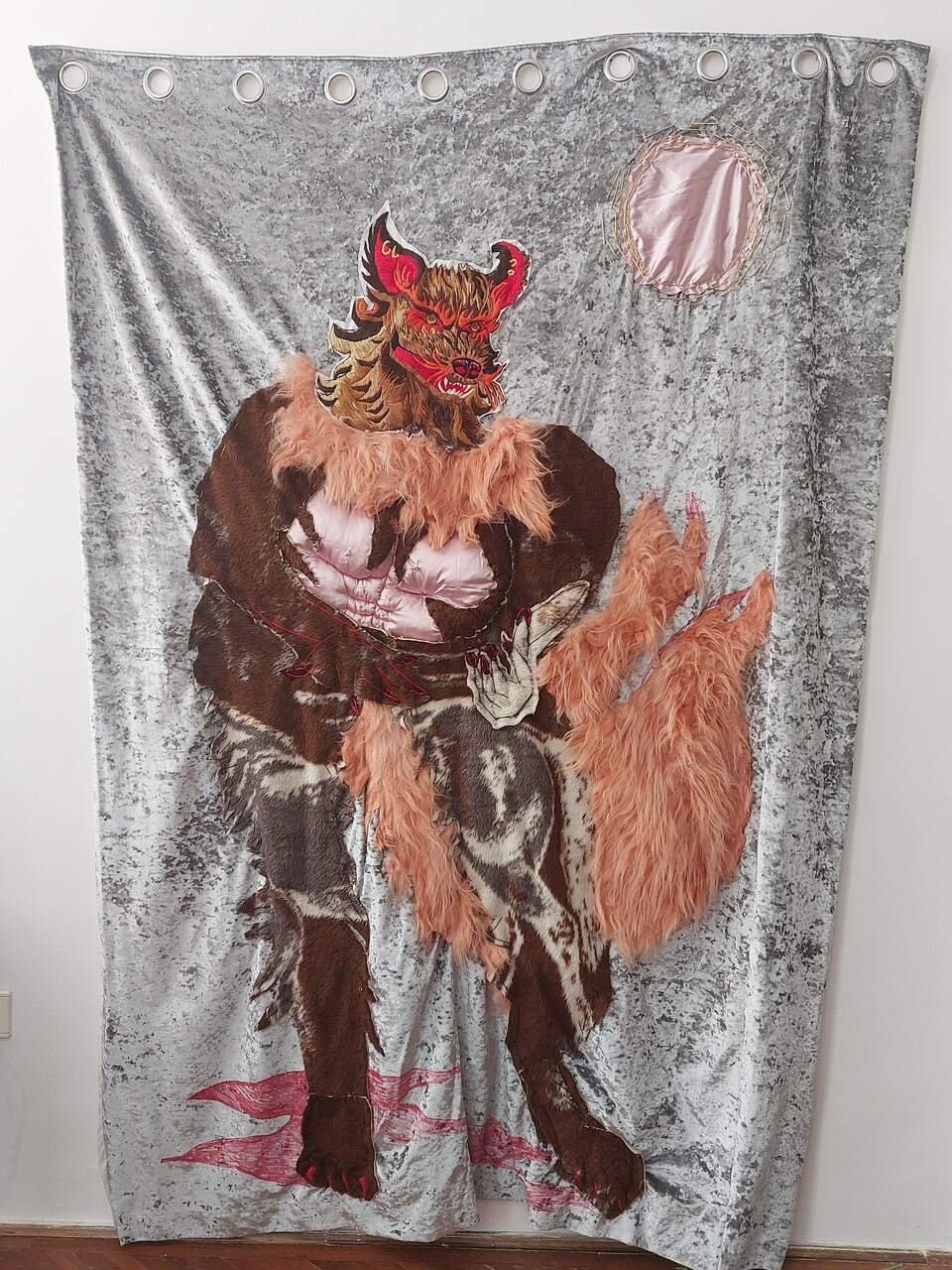
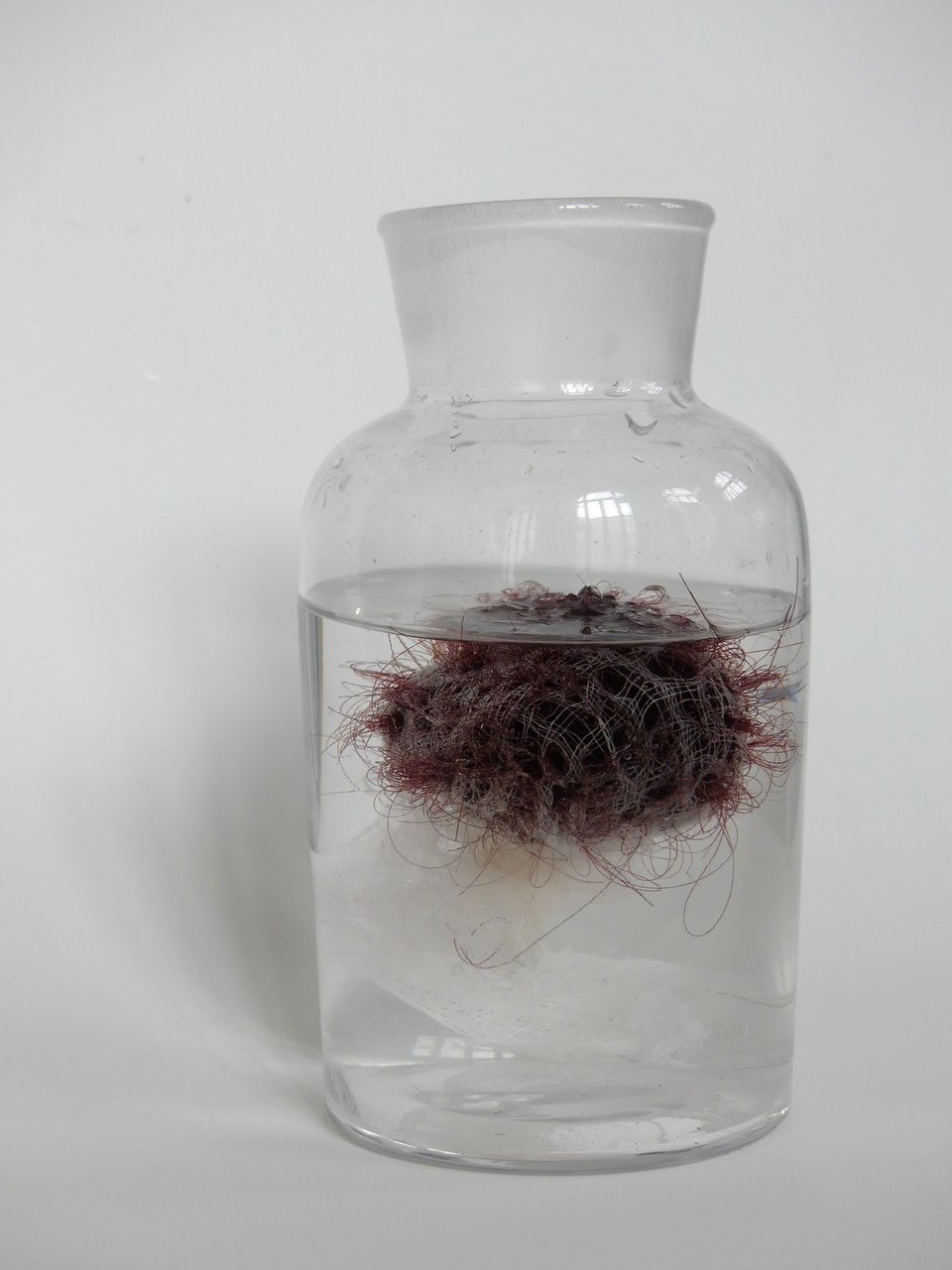

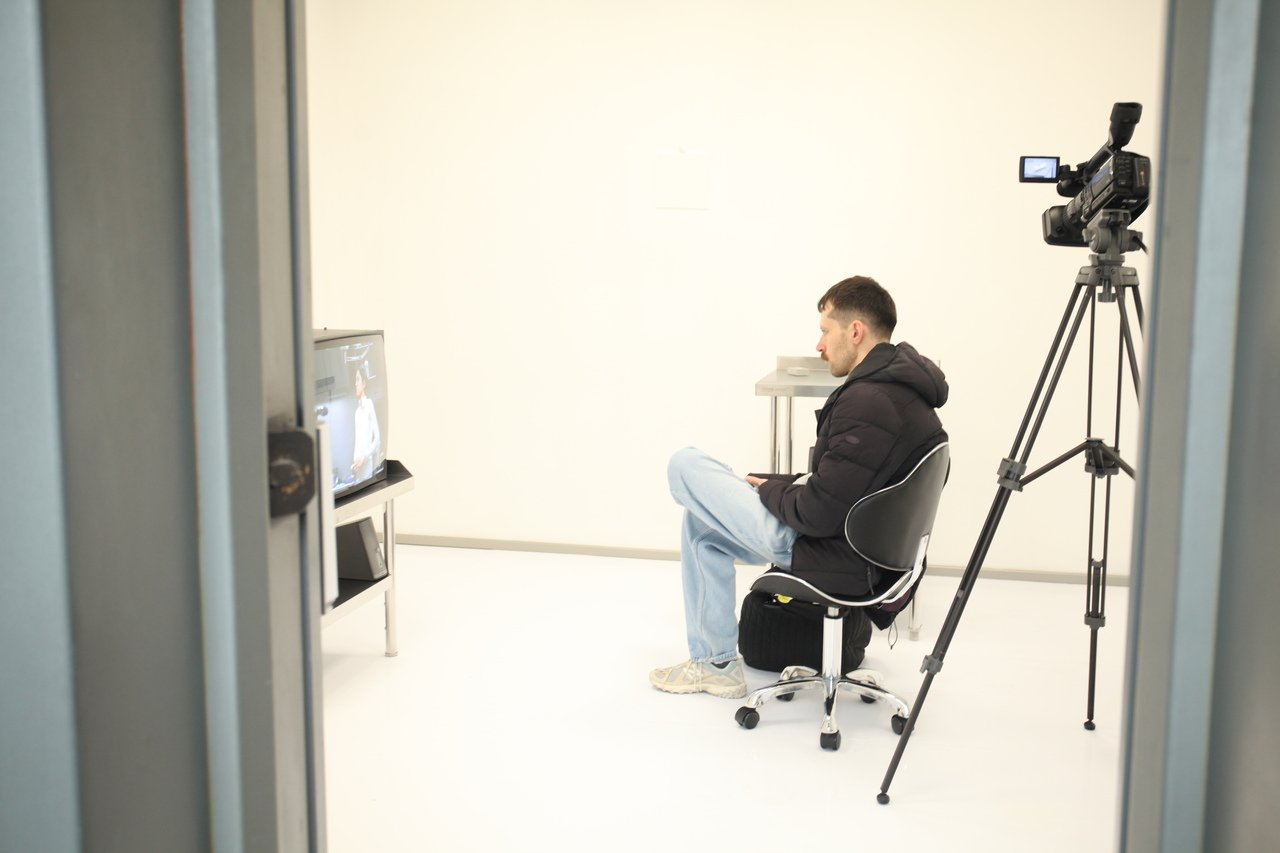
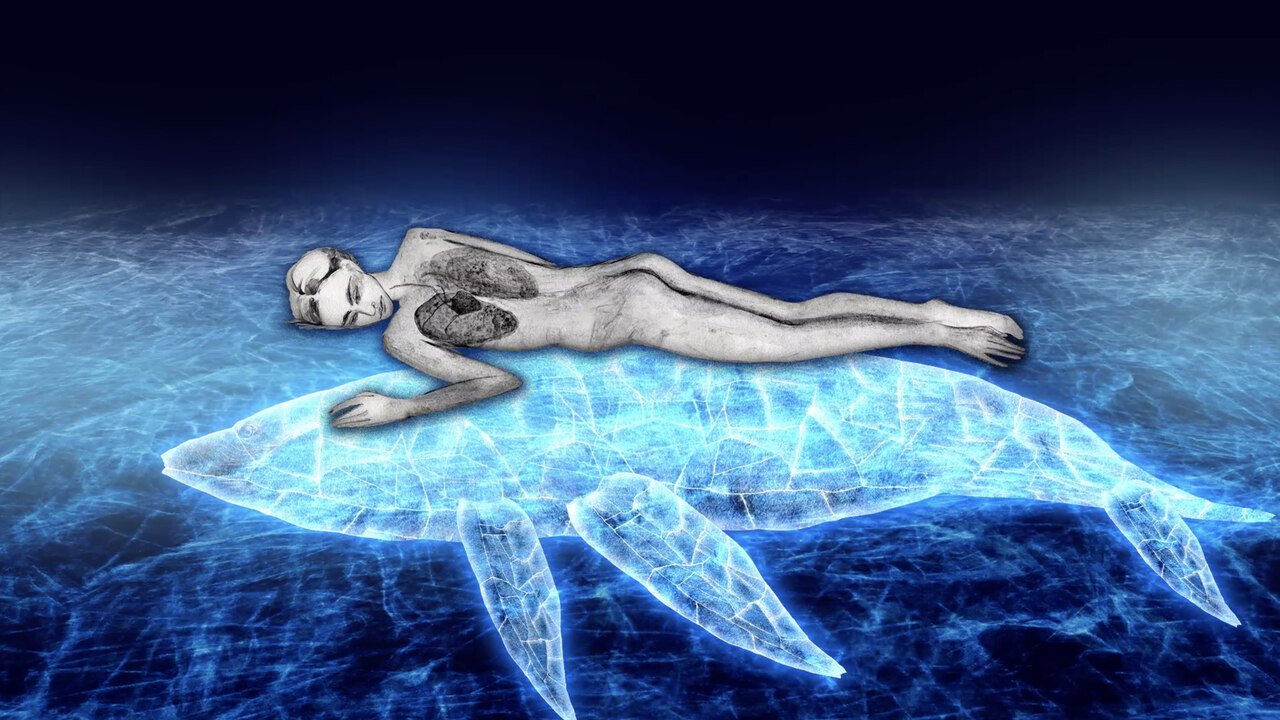
Artists: Larry Achiampong (UK), Kateryna Aliinyk (UA), Kader Attia (DZ/FR), Daniel Baker (UK), Anna Barna (HU), Mária Berhidi (HU), Gipsy Criminals (HU), Anna Daučíková (SK/CZ), Sara Greavu – Ciara Phillips – Derry Film and Video Workshop (IE), Róza El-Hassan (HU/SY), The Erfurt Women Artists’ Group (DE), Rachel Fallon – Alice Maher (IE), Robert Gabris (SK/AT), Dóra Galyas Denerák (HU), Andrea Gáldi Vinkó (HU), Andrea Éva Győri (HU), Anita Horváth (HU), Gideon Horváth (HU), Ingela Ihrman (SE), Flo Kasearu (EE), Dorottya Szonja Koltay (HU), Dominika Kowynia (PL), Anikó Loránt (HU), Goranka Matić (SI), Noor Afshan Mirza – Brad Butler (UK), Zanele Muholi (ZA), Iz Öztat (TR), Paula Rego (PT), Davinia-Ann Robinson (UK), Katarina Šević (RS/HU), Zsófia Takács (HU), Dominika Trapp (HU), Slavs and Tatars (PL/US), Zorka Wollny (PL), Lawrence Abu Hamdan (JO/UK), Nikita Kadan (UA), Ádám Jeneses – Dániel Kophelyil – Ádám Krasz (HU), Cal Kowal – Charlotte Moorman (US), Tuan Andrew Nguyen (VN/US), Open Group (UA), Tamás Páll (HU), Forensic Architecture (UK), Hanna Rullmann (NL) – Faiza Ahmad Khan (IN), OFF Seed Library – Seeds of Tomorrow, Kincső Bede, Mai Ling, Karolina Bregula, Eszter Salamon, Anna Daučíková, Richárd Melykó – Haibo Illés, Zsófia Móró, Zsófia Paczolay, Aliz Farkas, Sándor Alex Kunu, Vendel Vajda, Valentina Várhelyi, Bahaleen (PS), Border Emergency Collective (PL), Anna Engelhardt and Mark Cinkevich (UK/BY), fantastic little splash (UA), Martyna Marciniak (PL), Oleksiy Radynski (UA), Firas Shekhadeh (PS), Tytus Szabelski-Różniak (PL), Filip Wesołowski (PL), : Boglárka Dankó, Nóra Zsófia Demeter, Andrea Fajgerné Dudás, Andrea Gáldi Vinkó, Dorottya Szonja Koltay, Éva Magyarósi, Dóra Palatinus, Eszter Szabó, Klára Petra Szabó
Exhibition Title: OFF-Biennale Budapest
Curated by: The team of the curatorial board (Nikolett Erőss, Rita Kálmán, Eszter Lázár, Edit Molnár, Veronika Molnár, Kata Oltai, Lívia Páldi, Hajnalka Somogyi, Borbála Soós), Biennale Warszawa Foundation (Bartosz Frąckowiak, Ewa Kozik, Paweł Wodziński), The Bura Gallery team (Clara Farkas, Nikoletta Lakatos, Norbert Oláh), Useless Galeri (Luca Petrányi, Fanni Solymár), ETC. Magazine (Hana Čeferin, Ajda Ana Kocutar, Lara Mejač), Anna Ádám (founder) and students of the School of Disobedience, Dalma Czímer (Romano Kher), Renáta Gallai (K6 Galéria)
Venue: Various locations
Place (Country/Location): Budapest, Hungary
Dates: May 9 – June 15, 2025
